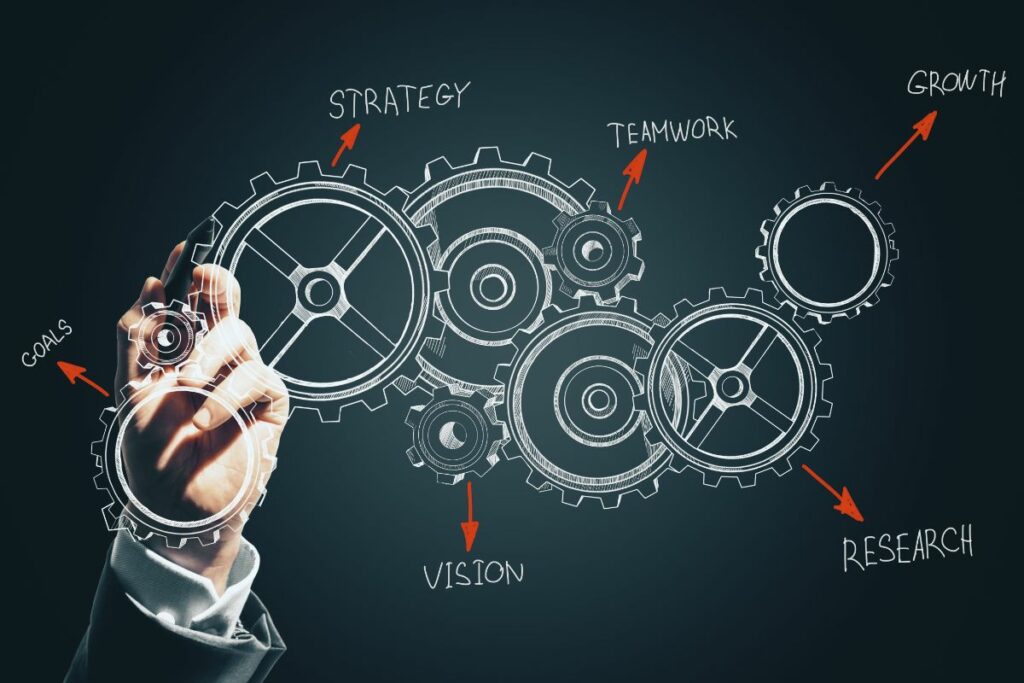Table of Contents
ToggleA. Emotional intelligence
B. Mindset and principles
C. Lead by example
D. SAFe Core Values
E. Lead the change
F. Support organizational change
The correct answer is
A. Emotional intelligence
B. Mindset and principles
C. Lead by example
Explanations
The three dimensions of Lean-Agile Leadership, as outlined in the Scaled Agile Framework (SAFe), are:
- Emotional Intelligence – Leaders in a Lean-Agile environment must possess emotional intelligence. This involves being aware of, controlling, and expressing one’s own emotions healthily and productively. It also entails understanding and managing the emotions of others, fostering a positive and collaborative work environment.
- Mindset and Principles – Adopting a Lean-Agile mindset and principles is crucial for leaders within SAFe. This dimension emphasizes the importance of leaders understanding and embodying the core values and principles of Lean and Agile methodologies. It’s about thinking lean, embracing Agile practices, and continuously seeking ways to improve and deliver value.
- Lead by Example – Leadership in a Lean-Agile context requires leading by example. This means demonstrating the behaviors and practices expected of others. Leaders should model the values and principles of SAFe in their actions, and decisions, and how they approach problems and challenges. This dimension reinforces the idea that effective leadership is not just about directing others but also about being a role model in the adoption and practice of Lean-Agile methods.
These dimensions are foundational to fostering an environment where Lean-Agile practices can thrive, driving effective change and ensuring that the organization can respond swiftly and efficiently to challenges and opportunities.
Let’s delve deeper into why each dimension is critical to successfully leading and sustaining a Lean-Agile transformation in an organization.
Emotional Intelligence
Emotional Intelligence (EI) is a key attribute for leaders in any context but takes on heightened importance in the Lean-Agile environment. EI encompasses several competencies:
- Self-awareness: Understanding one’s own emotions, strengths, weaknesses, values, and impact on others. Leaders with high self-awareness can lead with authenticity and integrity.
- Self-regulation: The ability to control or redirect disruptive emotions and impulses. It allows leaders to think before acting, creating a stable and trustworthy leadership presence.
- Motivation: A passion to work for reasons that go beyond money or status. This intrinsic motivation leads to a strong drive to achieve, optimism even in the face of failure, and a commitment to the organization’s goals.
- Empathy: The ability to understand the emotional makeup of other people. An empathetic leader can build and retain talent, cultivate a collaborative and cohesive team, and more effectively address grievances and conflicts.
- Social skills: Proficiency in managing relationships and building networks. Leaders with strong social skills are excellent communicators and persuaders, which facilitates change and drives the team towards a common vision.
Mindset and Principles
The Lean-Agile mindset is fundamentally about creating value, achieving sustainable workflows, and embracing change. Leaders who embody this mindset and its underlying principles inspire their teams to adopt these same values. Key aspects include:
- Respect for people and culture: Recognizing that lasting change requires respect for the people involved and the culture of the organization. Leaders must engage and empower team members.
- Flow: Understanding and visualizing the flow of value through the organization. Leaders should strive to remove bottlenecks, reduce batch sizes, and aim for incremental delivery to improve responsiveness.
- Innovation: Encouraging a culture of continuous learning and experimentation. Leaders should promote a safe environment for experimentation, where failure is seen as an opportunity to learn.
- Relentless improvement: Continuously seeking ways to improve processes, products, and services. Leaders should challenge the status quo and lead efforts to implement effective changes.
Lead by Example
Leading by example is perhaps the most visible and influential dimension. It involves:
- Modeling Lean-Agile behaviors: Leaders must consistently demonstrate the behaviors they expect from their teams. This includes being open to feedback, collaborating across boundaries, and focusing on delivering value.
- Making SAFe principles visible: By openly discussing and applying SAFe principles in decision-making, leaders make these principles tangible for their teams.
- Participating in the Lean-Agile transformation: Leaders should be actively involved in the transformation process, not only directing but also participating in training, planning, and execution activities.
Lean-Agile leadership is about more than just understanding the principles and practices of Lean and Agile; it’s about embodying these values in every interaction and decision. By developing emotional intelligence, embracing the Lean-Agile mindset, and leading by example, leaders can effectively guide their organizations through the complexities of modern business landscapes, fostering environments where innovation, collaboration, and value delivery flourish.
Other Leading SAFe 6.0 Question – Which pillar in the House of Lean focuses on the Customer being the consumer of the work?

© 2022 spoclearn.com